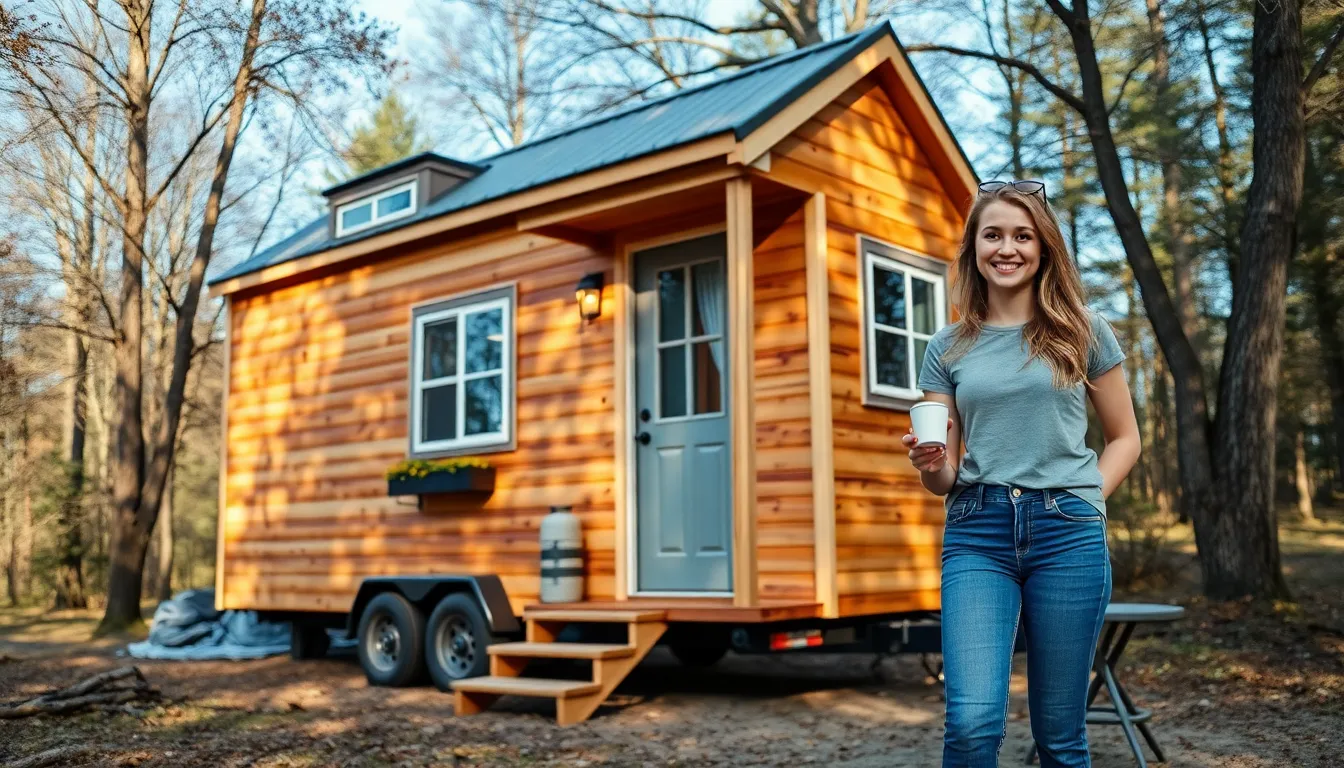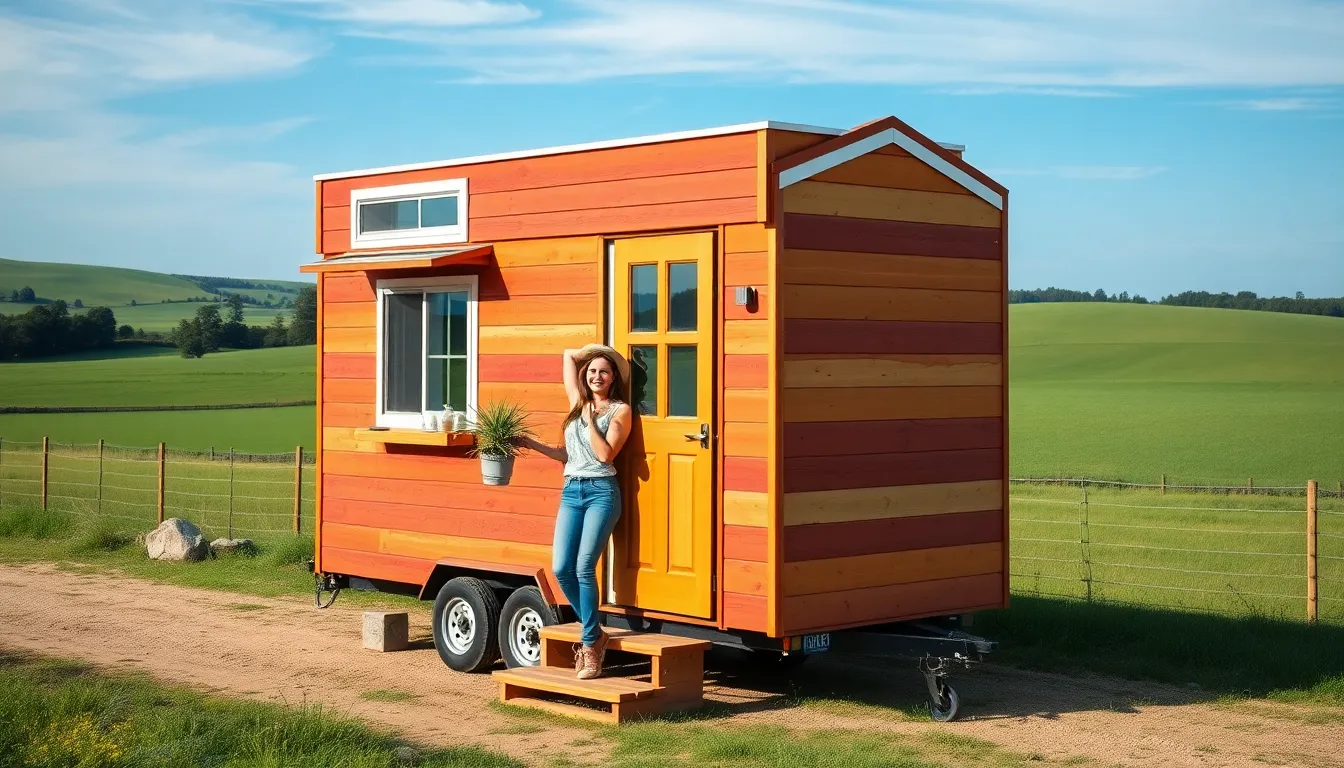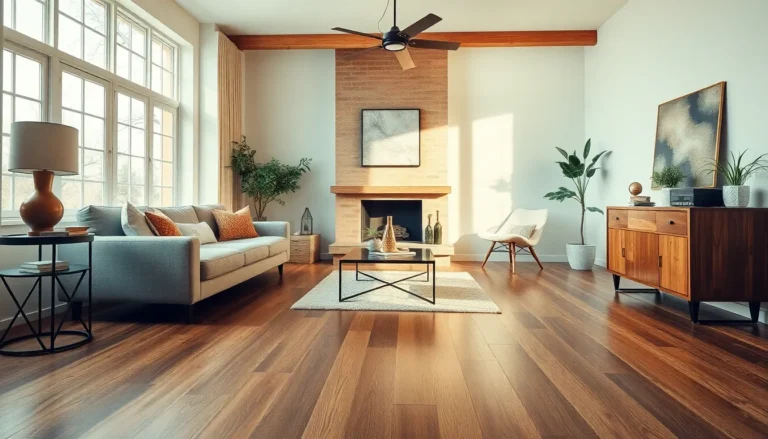Table of Contents
ToggleImagine waking up to the sound of birds chirping and the gentle sway of your home rolling with the breeze. Tiny houses on wheels aren’t just a trend; they’re a lifestyle revolution. These pint-sized powerhouses pack all the charm and functionality of traditional homes into a mobile package, allowing their owners to embrace freedom and adventure without sacrificing comfort.
Overview Of Tiny Houses On Wheels
Tiny houses on wheels offer a compact, mobile living solution that focuses on minimalism and eco-friendliness. Owners appreciate how these homes allow for a simpler lifestyle while maintaining essential comforts. Designed to be towable, tiny houses provide the flexibility to relocate without hassle.
Compact designs maximize space efficiency. Thoughtful layouts create functional areas, such as multi-purpose furniture and hidden storage solutions. Many units include modern amenities like kitchens, bathrooms, and living spaces, making it possible for individuals or families to live comfortably.
Affordability plays a significant role in the appeal of tiny houses on wheels. The average cost ranges between $30,000 and $80,000, considerably lower than conventional homes. Financing options often exist, allowing more people to embrace this lifestyle.
Environmental sustainability stands out as another benefit. Many tiny house owners prioritize eco-friendly materials and energy-efficient appliances. With smaller footprints, these homes contribute to reduced resource consumption and less waste.
Rapidly growing, the tiny house movement continues to gain popularity among various demographics. Young professionals, retirees, and families all find allure in the lifestyle’s flexibility and personal empowerment. Communities dedicated to tiny living emerge, fostering a sense of belonging among like-minded individuals.
Overall, tiny houses on wheels embody a shift towards intentional living. Many people admire the ability to reduce clutter while enjoying greater mobility and experiences. This trend redefines conventional housing, offering an alternative to those seeking freedom and connection to nature.
Benefits Of Living In A Tiny House On Wheels
Tiny houses on wheels offer numerous advantages that attract many individuals. These homes provide a unique blend of practicality and lifestyle choices.
Affordability
Cost plays a crucial role in the tiny house appeal. Average prices range from $30,000 to $80,000. This is significantly lower than traditional home prices, making home ownership more achievable. Financing options available further enhance access for prospective owners. Lower ongoing expenses contribute to financial freedom, allowing individuals to focus on experiences rather than debt. Tiny house living encourages a minimalistic approach, reducing unnecessary spending and promoting savings.
Flexibility And Mobility
Mobility stands as a major benefit of tiny houses on wheels. Owners easily relocate their homes to different environments, whether seeking adventure or settling in new communities. This flexibility meets various lifestyle needs, such as travel or job relocations. Many tiny houses utilize space efficiently, providing comfort without sacrificing essential amenities. Owners often find themselves embracing new experiences and forming connections with diverse surroundings. Additionally, the ability to move enhances personal empowerment and independence, reflecting a core value in the tiny house movement.
Design Considerations
Designing a tiny house on wheels involves thoughtful planning to maximize space and incorporate essential features. Owners prioritize functionality and aesthetics to create comfortable, efficient living environments.
Space Optimization
Space optimization plays a crucial role in tiny house design. Creative layouts allow for multifunctional spaces that adapt to various needs. Foldable furniture, such as Murphy beds and collapsible tables, enhances flexibility while maximizing floor area. Vertical storage solutions, including shelves and hooks, help utilize wall space effectively. Additionally, incorporating built-in storage under stairs or seating areas reduces clutter. Open floor plans contribute to an airy feel, making small areas appear larger.
Essential Features
Essential features maintain comfort in tiny houses. A fully equipped kitchen often includes energy-efficient appliances and ample counter space for meal preparation. Compact bathrooms typically feature shower stalls or composting toilets to save space. Owners frequently seek natural light, utilizing large windows and skylights to create a bright atmosphere. Efficient heating and cooling systems promote year-round comfort while minimizing energy consumption. Furthermore, sustainable materials often comprise the building structure, aligning with eco-friendly principles.
Challenges And Limitations
Tiny houses on wheels face various challenges and limitations that potential owners may encounter.
Zoning And Regulations
Zoning laws often create hurdles for tiny house owners. These regulations vary significantly between states and municipalities. Many areas designate minimum home sizes, limiting the feasibility of tiny dwellings. Additionally, some jurisdictions restrict parking or land use for tiny homes. Owners frequently need to navigate complex permitting processes to obtain approval. Finding suitable locations for placement becomes critical, particularly in urban settings. Compliance with building codes may also pose difficulties, requiring adjustments to plans and designs.
Lifestyle Adjustments
Lifestyle adjustments are essential when transitioning to a tiny house. Individuals frequently need to downsize their belongings significantly. Embracing minimalism plays a key role in adapting to limited space. Many people discover the importance of prioritizing needs over wants, which can be a significant shift. Additionally, routines may require reevaluation to accommodate the compact living environment. Shared spaces often lead to conflicts if not managed properly. Social interactions might change, as living in close quarters with family or friends can challenge personal boundaries.
Conclusion
Tiny houses on wheels embody a transformative approach to living that resonates with many seeking freedom and simplicity. This lifestyle not only promotes minimalism but also encourages a deeper connection with nature and community.
As more people embrace this way of life the tiny house movement continues to grow and evolve, offering innovative solutions to housing challenges. The blend of affordability mobility and sustainability makes tiny homes an appealing choice for diverse demographics.
While navigating challenges like zoning laws and lifestyle adjustments can be daunting the rewards of living in a tiny house on wheels often outweigh the hurdles. Ultimately this lifestyle empowers individuals to redefine their relationship with space and possessions fostering a more intentional way of living.








